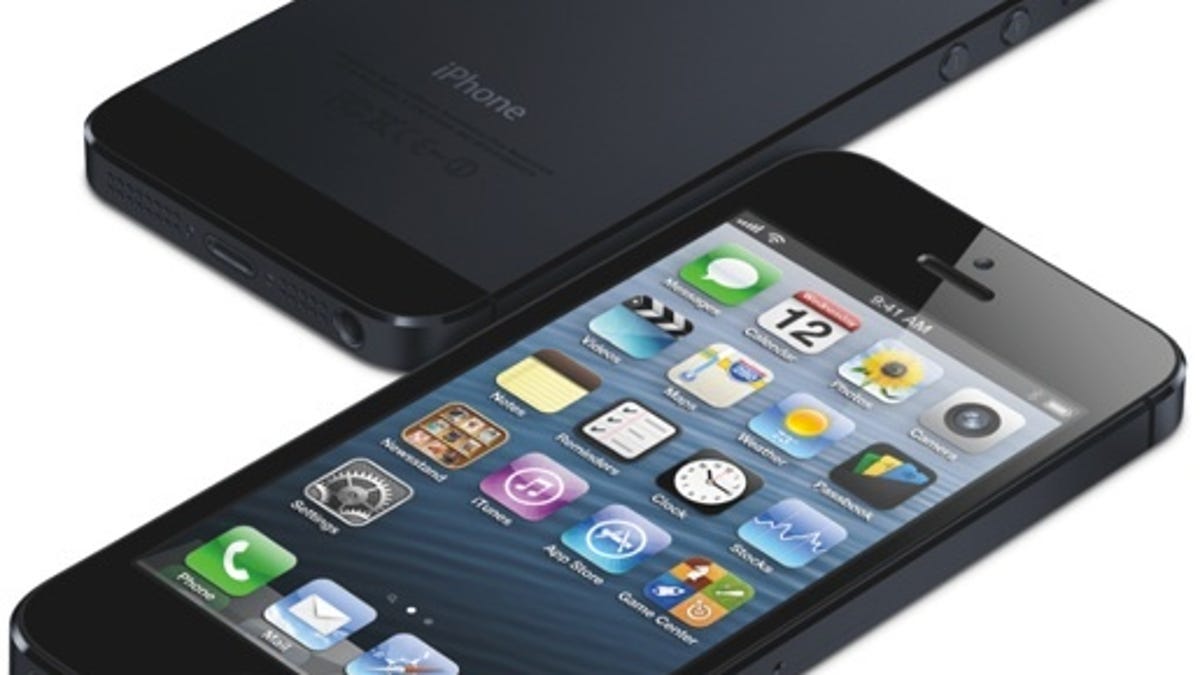Inside the iPhone 5: What makes it tick
Apple's A6 chip may be a unique Apple design, says an analyst. And Qualcomm's newest 4G LTE silicon is a major improvement.

Apple's revamp of the iPhone included an overhaul of the inside too. So, what new silicon did Apple drop into the iPhone 5's chassis?
A6 chip: It's faster! (duh). Here's a summary of what Apple says. "Up to twice as fast compared with the [iPhone 4S' A5 chip]...The A6 chip also offers graphics performance that's up to twice as fast as the A5."
Problem is, Apple doesn't say much beyond that. So, I asked Anand Shimpi from chip review site Anandtech.
It turns out that Anand's initial guess was wrong. Based on the performance gains, he initially believed the A6 used an ARM Cortex-A15 design. That's the latest and greatest from ARM, the chip architecture that powers virtually all of world's major-brand smartphones.
But in a post on Saturday, he says that's not the case.
"It turns out I was wrong," he wrote.
"Based on a lot of digging over the past couple of days, and conversations with the right people, I've confirmed that Apple's A6 [chip] is based on Apple's own ARM based CPU core and not the Cortex A15," he wrote.
The upshot is that the A6 can't be pegged to any current ARM chip design because Apple has taken design liberties. This approach is similar to what Qualcomm has done with its Snapdragon S4, which isn't based on any particular ARM chip design.
The graphics processing unit is less clear but Anand believes it could be using faster Imagination PowerVR SGX543 cores.
Another analyst believes Apple is able to balance increased performance with decent battery life because of tweaks done independent of the main central processing unit, or CPU.
"In order to get double the performance but still have good battery life, more than likely it's because they have beefed up peripheral cores," said Francis Sideco, an analyst at IHS iSuppli. "Those are GPUs, accelerators that are peripheral to the main core," he said.
See CNET's full coverage of Apple's iPhone 5 event
LTE/4G/3G: Apple makes some pretty impressive claims about battery life. Despite 4G LTE's reputation for sucking the life out of smartphone batteries in short order, Apple says battery life, if anything, is a little better compared to the iPhone 4S.
"Internet use: Up to 8 hours on 3G, up to 8 hours on LTE, up to 10 hours on Wi-Fi," according to Apple.
That probably has more than a little do with Qualcomm's newest silicon. Apple's A6 is paired with Qualcomm's single-chip 28-nanometer MDM9615 LTE, according to Anand.
"Apple claims support for EDGE, EV-DO, HSPA, HSPA+, DC-HSDPA and LTE. The WiFi gets updated to dual-band 2.4GHz and 5GHz 802.11a/b/g/n, using 20MHz channels Apple can hit a peak link rate of 150Mbps over WiFi," he said.
iPod Touch: The new iPod Touch got an upgrade too: to a more pedestrian (and dated) dual-core A5 -- the same chip in the iPhone 4S and iPad 2. That said, the A5 "provides up to twice the processing power and up to seven times faster graphics than the previous generation," according to Apple, referring to the previous chip in the iPod Touch.
Teardowns will reveal other new silicon in the iPhone 5, likely including upgraded NAND flash memory and system DRAM chips.
Originally published on September 12.
Updated on September 13 at 5:00 p.m. PDT.
Updated again on September 15 at 4:25 p.m. PDT : corrects initial speculation about the ARM A15 chip.

